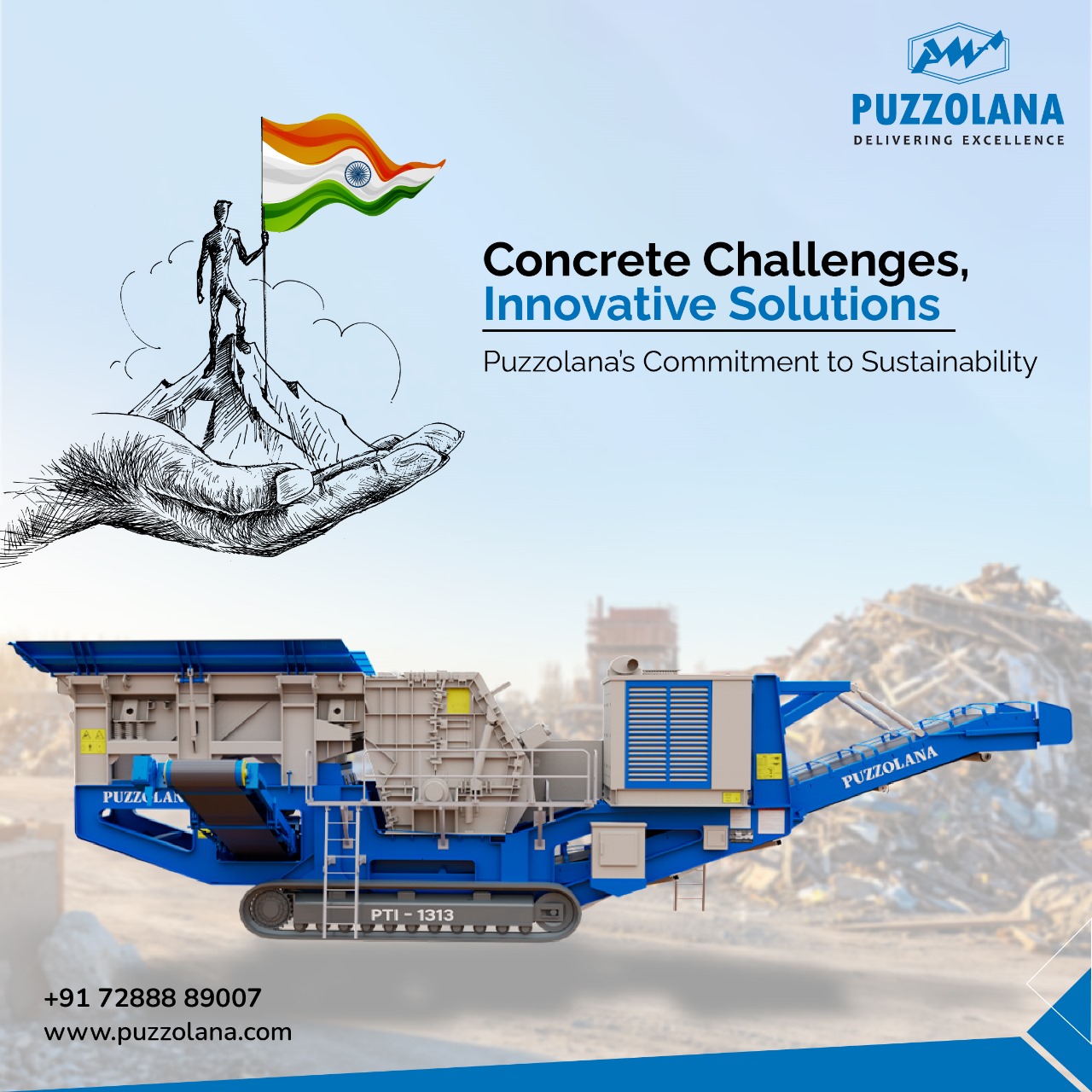Concrete Challenges, Innovative Solutions: Puzzolana’s Commitment to Sustainability
Blogs

Every year, globally more than 10 billion tons of concrete is used globally. Meanwhile, countless concrete challenges structures are also taken down, of which the cumulative value is expected to reach 3.4 billion tons by 2050. Large consumption of cement and equally large amount of construction waste produced present two sets of critical situations. The manufacture of concrete involves the use of immense amounts of natural resources which eventually leads to environmental degradation. The other problem is that concrete buildings, when demolished, create a lot of construction solid waste.
It is estimated that construction solid waste generation constitutes 30-40% of the entire urban solid waste generation per year in fast-growing cities and towns. In order to address these two challenges, turning construction solid waste into recycled aggregates has been considered as good and viable option.
Puzzolana’s solutions for Construction solid waste management, in terms of handling, crushing & screening, aid in producing high quality recycled aggregates. The recycled aggregates which were produced from the recycling process can be categorized as recycled coarse aggregates (RCA) (> 4.75 mm) and recycled fine aggregates (RFA) (< 4.75 mm). Recycled fine aggregates (RFA) made up about 40-60% of the waste concrete mass. This type of concrete
which is made of RCA and RFA is referred to as RCA concrete and RFA concrete respectively.
It is estimated that 40-50 % of life-cycle Co2 emissions resulting due to various stages in the life cycle of concrete production, including raw material extraction and processing, transportation, Concrete manufacturing, transportation to the building site, construction, and demolition can be reduced by implementing energy efficient &conversion efficient recycling technologies that allow for the on-site end-to-end processing of the materials.
This is mainly achieved in the following manner:
Virgin Material Use: On average, recycling 1 ton of C&D waste can save approximately 1.2 tons of CO2 compared to using virgin aggregates.
Landfill: Recycled aggregates can help divert 80–90% of C&D waste from landfills, helping cities meet their waste reduction and recycling targets.
New Energy Savings: Recycling steel, for example, can save up to 60–70% of energy compared to producing it from raw iron ore, translating into significant CO2 savings.
Conversion efficiency: Puzzolana’s superior crushing and screening solutions adopt various energy efficient technologies such as fuel optimized engines, high efficiency electric motors & gear units, fully electric drive-trains etc,. when compared to the competition. We have pioneered fully electric hybrid systems for mobile crushers. Our end users can operate the equipment using electric supply from grid with savings of 40-50 % on operating costs compared to a diesel-hydraulic or diesel-mechanical systems.
View our expansive machinery
With Puzzolana, you have the chance to work with the brightest professionals in the field and be a part of our expanding global footprint. We are looking for motivated professionals to join our team.